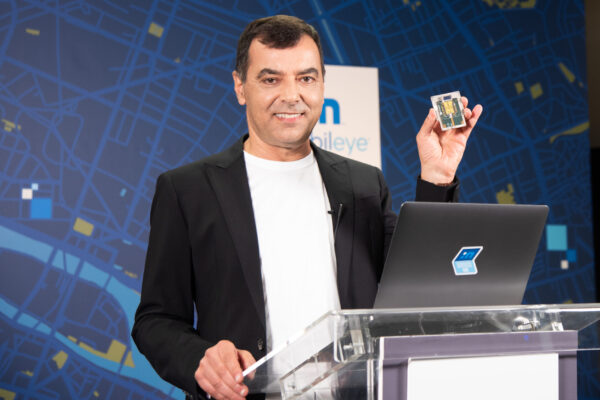
Mobileye gives a glimpse of its future technology
Mobileye’s strategy for implementing autonomous driving is based on three pillars, explained the company’s CEO, Amnon Shashua: the centimetre-accurate dynamic mapping of roads and places – in Mobileye’s terminology called “Road Experience Management” (REM) -, the rule-based Responsibility-Sensitive Model (RSS) for compliance with traffic rules, and finally the underlying technology, which itself consists of two separate and redundant subsystems. The latter use Mobileye’s camera, lidar and radar sensor technology for environment detection.
In Mobileye’s approach, the camera serves as the primary sensor. The reason: this technology is available comparatively inexpensively, and Shashua is convinced that a technical solution for autonomous driving must be economically attractive in order to find corresponding acceptance and enable the company to grow. According to Shashua, the redundancy enabled by the other two sensor technologies should allow for three times the decision-making reliability in traffic than human drivers.
The Mobileye boss also offered a glimpse into the future development of its technology: based on powerful semiconductors from the group’s parent company Intel, Mobileye has developed a software-based radar technology that offers image capture with 2304 channels, a dynamic range of 100 decibels and a side-lobe level of 40dBc. With these parameters, this radar technology is expected to meet the required depth of detection needed for Autonomous Driving approval. With fully digital and state-of-the-art signal processing, multiple acquisition methods, raw data utilisation and multi-image tracking, Mobileye aims to achieve a paradigm shift in AV system design, enabling a significant leap in performance.
Intel’s semiconductor expertise, especially in the area of silicon photonics, plays an important role in this. Mobileye plans to integrate active and passive laser elements on a silicon chip. Shashua has high hopes for this lidar SoC, which should be ready for series production from around 2025. “We call this a photonic integrated circuit. It has a total of 184 vertical lines that are moved by optics. This development is something very special and gives Intel a significant advantage in making these lidar systems,” the Mobileye top manager said.

Mobileye’s mapping technology also plays an important role: cars equipped with the company’s technology also act as land surveyors by feeding their position and environment data into a cloud database. In this way, they record eight million kilometres of road – per day. In total, the Mobileye cars are said to have recorded almost one billion road kilometres by now. The technology is currently installed in just under one million vehicles. In contrast to other approaches such as Google or Here, semantic data is also taken into account, the company says. This is of particular importance for autonomous driving, as it allows the environment to be understood and put into context.
To prove the scalability of mapping for autonomous driving, Mobileye plans to launch test drives with autonomous vehicles in four other countries. The company will provide local teams with the vehicles they need. It is not necessary to send specialised engineers; after appropriate safety training, the vehicles are already ready for use. This approach was used in 2020 to put autonomous vehicles on the road in Munich and Detroit in just a few days.
More information: www.mobileye.com
Related articles:
“We need standardized criteria for autonomous driving”
Magna installs EyeQ5-based driver assistance system in series car
Mobileye chooses Luminar for L4 autonomy solutions
Mobileye tests self-driving vehicles in German city traffic
 If you enjoyed this article, you will like the following ones: don't miss them by subscribing to :
eeNews on Google News
If you enjoyed this article, you will like the following ones: don't miss them by subscribing to :
eeNews on Google News




